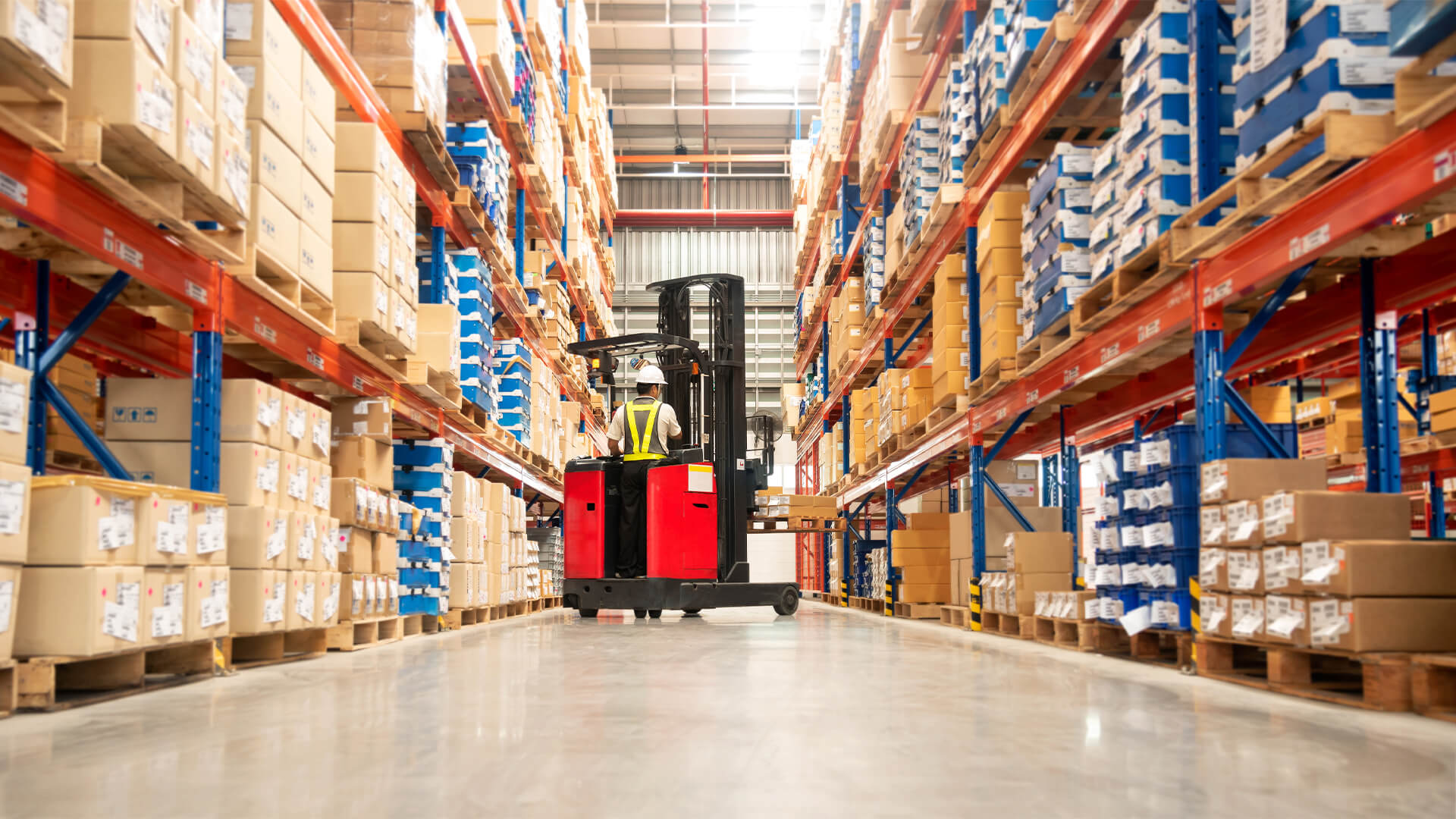The number of business premises used for warehousing and logistics has almost doubled in the last decade, according to the Office for National Statistics. This has been largely driven by the massive increase in e-commerce and online retailers such as Amazon – a company that accounts for a quarter of all warehousing space in the UK.
In late 2021, property agent Cushman & Wakefield predicted that the UK could run out of warehousing space within a year. Over 12 months later, demand continues to be at an all-time high, with vacancy rates having been sat at less than 2% for the past year. This is way below the rate needed to balance fluctuations between supply and demand, which is 8%.
Here, with some insights from Slingsby, one of the UK’s leading suppliers of industrial & commercial equipment, we’ll investigate what’s behind the demand and why businesses need to adapt.
What’s driving the demand for warehousing space?
Where e-commerce has dominated the take-up of warehousing space over the past couple of years, recent analysis has also shown that the increase in demand is also because of stockpiling. More retailers and manufacturers are now using third-party logistics providers to store their goods, which drove almost 20% of all warehousing take-up in the first half of 2022.
This is likely due to businesses wanting to make their supply chains more resilient rather than relying solely upon ‘just-in-time’, a model that is highly vulnerable to any disruptions within the supply chain. Stockpiling goods means that even if there is a disruption, the business will have enough stock to fulfil orders and keep up with customer demand.
This, along with what’s seen as chronic under-development of storage space, has created a perfect storm that is affecting businesses across the UK and limiting their growth.
Which industries are worst affected?
The lack of space is bad news for all industries that require storage for their stock, regardless of the sector. Most industries are so intertwined with the global supply chain that struggling for space to store goods puts them all at risk of being unable to fulfil their orders.
Industries that rely on the availability of many different parts, such as manufacturing, tech and automotive, could see production held up.
Recent joint analysis from Savills, the British Property Foundation (BPF) and the UK Warehousing Association found that the lack of space has meant that rents have risen around 61%. This is most harmful to small businesses and those that work with slim margins, which may struggle to keep up with rental costs and could see their profits squeezed even more. Consumers may also feel the bite of this, with some businesses forced to pass on extra costs to their customers.
The impacts are not just felt across specific sectors, but also in locations around the UK. Warehousing and logistics are the dominant industries in some areas, particularly in the Midlands where the concentration is known as the ‘golden logistics triangle’. Telford-based businesses are some of the worst affected by lack of space, which can have a knock-on effect on the local economy – especially since these issues inhibit the ability of businesses to expand and scale up.
How can businesses adapt to the lack of space?
Given the lack of space and higher costs, optimising available space will be essential for businesses to keep their operations moving as smoothly as possible. Here are some of the things that should be considered going forward.
1. Greater use of height
Utilising all available space will be vital – especially vertical space. For small storage facilities, shelving units, stacking systems, and warehouse steps may be enough to maximise the height. For larger spaces or those that deal with heavy items and materials, pallet racking is an essential investment. Specialised equipment such as mobile warehouse steps and sideloaders can assist in the process of storing items at height and make it much safer and less labour-intensive.
Although still uncommon, more developers are pointing towards multi-storey warehousing as a way to combat the lack of space. The UK’s first multi-storey logistics space, Segro V-Park Grand Union, is currently in development just outside of London and is planned to be six storeys high. Building mezzanine levels into current spaces may also provide a faster short-term solution.
2. Efficient storage
Similar to utilising height in your warehouse is also investing in ways to efficiently store your equipment, so that it takes up less floor space.
For this there are many simple but effective solutions. For example, some commonly used equipment such as steps, shelf trucks, and trolleys can be found in foldable styles, meaning that they can easily be packed away when not needed. Wall brackets can also help to store equipment such as heavy-duty ladders safely, securely, and in a way that saves space.
3. Automation
Automating otherwise time-consuming tasks can ensure processes are completed quickly, as well as reduce the risk of human error. This is especially useful for FMCG companies where speed and accuracy are essential for customer convenience.
Warehouse management systems and the use of AI technologies can both help towards achieving this. For example, AI in warehouses can streamline processes and help businesses to use their space more efficiently through analysis and effective planning. AI can quickly use market trends and current demand to calculate future needs, aiding in decision-making around what stock to prioritise and where to store it to avoid wasting space.
Powered handling products such as powered pallet trucks and pallet stackers can also assist with tasks that are carried out by people. Essentially, they do the heavy lifting, reducing the amount of manual effort required and thus improving efficiencies.
4. Expanding supplier bases
Businesses that are unable to build their own stockpiles due to space could also minimise the risk of supply chain disruptions by expanding their supplier bases. Doing so will mean that when an issue strikes, the business will be able to source what they need from different suppliers.
5. Strategic use of locations
One important thing to remember is that apart from lack of space, labour vacancies are another major issue faced by the logistics and warehousing industries. Automation can partially help in combating labour shortages by making workers’ jobs easier to complete. However, future developments will need to not only consider the available space, but also the surrounding labour pool. In areas where logistics and warehousing are dominant, the competition for skilled workers will be the fiercest.
Along with these adaptations, perhaps the real key to helping businesses meet their demand and thrive is the sufficient development of warehousing space. The expansion of available space might then lead to even greater demand for it, with businesses growing and increasing their own stockpiles. The report by Savills and the BPF predicts that growth could rise by 42% in Leeds, 35% in Manchester, 29% in Birmingham, and 28% in Nottingham – leading to benefits such as job creation and giving the local economy a boost.
There are already signs of renewed growth in warehouse development plans, with just over 2 million sq ft of warehousing space under construction in Yorkshire alone, which are expected to be open in 2023.
If this continues, the day the UK runs out of storage space may never come.






